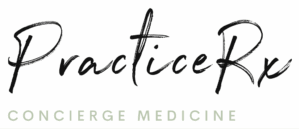
“Hormone therapy for women isn’t radical. Ignoring the problem is.”
You’ll discover:
- Why hormone therapy isn’t just for men and why the system is failing women
- Why it’s time to stop waiting on FDA permission to feel good again
The real-world benefits I’ve seen in women using HRT - How things like brain fog, libido, and mood are warning signs, not just symptoms
- The potential risks of HRT, since nothing is ever free
- What every woman should know about perimenopause, postmenopause, and options
beyond “just deal with it”

Hormone Therapy for Women in the USA
I’m just gonna say it: As a man, I can confidently voice my perception that the entire American healthcare system is still wildly biased toward men. Always has been.
Need an example?
It’s 2025 and are exactly zero FDA-approved guidelines in the U.S. for female hormone therapy for vasomotor (think hot flashes etc.) and other hormonal symptoms for peri and postmenopausal women. Meanwhile men have an abundance of education and options for hormone replacement, and their doctors are well-trained on well-adopted guidelines for treatment of even mild symptoms.
So why is that same rigor not reciprocated in our female counterparts? It’s not because hormone therapy in women is dangerous. It’s not because it isn’t wildly effective. But because no one has taken the time (or the funding) to prioritize the research here in the States to get the ball rolling women’s wellness guidelines.
If you hop over to PubMed (the world’s largest database of peer-review medical research), you’ll find plenty of studies and international recommendations backing hormone therapy for women in both perimenopause and postmenopause. But none of those studies or guidelines coming out of the U.S.

Hmm… what is this really telling us about women’s health?
It means American women are often told they just have to suffer. That their fatigue, hot flashes, mood swings, weight gain, low libido, and brain fog are just “part of getting older.” And since there’s no neat little FDA rubber stamp on women’s hormone therapy, most providers just don’t offer it; or worse, don’t even understand it because it was never taught in school.
Now let’s get fun part and explore the “Top 7 benefits” I’ve seen happen in my nearly decade of experience treating women’s hormones and what you might be missing out on. If you’re ready to start your free consultation, let’s talk. It’s free.
7 Benefits of Hormone Replacement Therapy

1. Energy Comes Back
Women always say some version of this: “I finally feel like myself again.” or “I forgot this is what normal felt like.” You’re not supposed to feel wiped out every day after getting out of before, before lunch, after lunch, and everywhere in between.
Testosterone and estrogen (in the right balance) help restore natural drive and stamina. This is because these hormones regulate mitochondrial function (the energy engines inside your cells) and help stabilize dopamine and serotonin that affect mood, motivation, and vitality.
2. Mood Stabilizes
Hormones impact neurotransmitters, which influence everything from motivation to how quickly you cry at a Subaru commercial. Balancing the right amount hormones doesn’t make life perfect, but it sure helps take the edge off and gives you back some emotional resiliency.
3. Sex Drive Isn’t Dead
This one usually takes women by surprise. “I thought I was just too tired or stressed.” Nope. Low testosterone and DHEA are a massive factor in low libido, vaginal dryness, and arousal issues. Fix the hormones, and things wake up. So do relationships. Except if your libido issues are tied to your man’s selective hearing when you tell him important dates, but he swears you never did. We can’t help you with that.
4. Sleep Improves
Estrogen helps regulate REM sleep. Progesterone has a calming, GABA-like effect. Testosterone reduces nighttime awakenings. When I first started managing hormones, I was so surprised that one of the first things I would consistently heard from my patients was their sleep had improved!
5. Body Composition Shifts
Not everyone loses weight on HRT, but almost everyone who is physically active says they are finally noticing the benefits of their workouts in how they look in the mirror. There’s nothing more defeating than putting in the sweat-equity at the gym only to realize months later you still look the same… Hormones affect muscle tone, fat storage, water retention, and insulin resistance. The scale might not reflect much because muscle tissue is denser than fat tissue, but the mirror sure does.
6. Brain Fog Lifts
When hormones decline, especially estrogen and testosterone, your brain takes a big hit. These hormones play a direct role in neurotransmitter activity, synaptic signaling, and blood flow to the brain, which you don’t have to be a doctor to know blood flow + brain = good. Estrogen enhances verbal memory and processing speed, which is why I welcome estrogen even in men’s hormone replacement, while testosterone improves focus and executive function. You can think faster, recall words more easily, and stay mentally sharp throughout the day.
7. Confidence Returns
This one’s harder to measure, but easy to see by yourself and the people who know you best. The tone of voice, posture, and expressions change in a good. Women feel empowered when they’re no longer floating down the river of aging without a paddle.
Have a Question?

What About the Risks of HRT for Women?
What a bummer to talk about the risk after I just hyped you up, right? Nothing in medicine is totally risk-free. But here’s the thing, most of the concerns around hormone therapy for women are outdated, anecdotal, or based on studies that don’t reflect modern approaches or bioidentical options.
Because the U.S. lacks clear, standardized FDA guidelines for female hormone therapy, regimens can vary a lot from one provider to another. That makes it tough to nail downside effects with precision. Here’s some things to keep in mind.
- Breast tenderness, bloating, or mood swings may occur with improper estrogen/progesterone ratios. These are typically dose-related and correctable.
- Breakthrough bleeding can happen early in treatment, especially if estrogen is unopposed or the uterine lining isn’t managed properly.
- Acne or hair growth may show up with elevated testosterone, but this is more common with supraphysiologic dosing, not restoration to optimal levels and is easily correctable with reduced dosing.
- Fluid retention or weight changes can occur but often resolve as hormones stabilize.
- Long-term cancer risk is often misunderstood. Most newer studies on bioidentical hormones, especially when used transdermally and with proper progesterone balance, show no increased risk, and in some cases, protective effects.
Final Thoughts by Dr. Clay Hall, NP- PracticeRx

If you can’t tell by now, I am biased for pro-hormone care for women,. This is because it works, its safe when done with someone who knows what their doing (AKA me), and I’ve seen all the good that comes from empowering women to feel better and be more confident in life. If you’re reading this and wondering if your symptoms might be hormone-related, I encourage you to listen to that little gut instinct. Whether it’s weight gain, low sex drive, broken sleep, hot flashes, or just that nagging sense that something feels off… you deserve answers. And solutions.
I’ve worked with hundreds of women just like you, and I can help guide the right labs, the right options, and a personalized plan that actually supports how you want to feel in your body again. If you have questions, or would like to discuss this further, please book a free consultation.
Feel Good. Live Better.
–Clay


